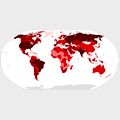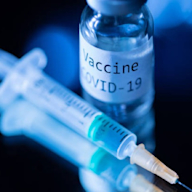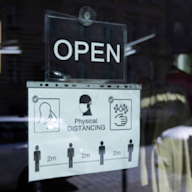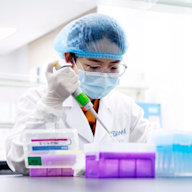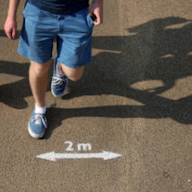Search results
Sep 1, 2020 · Broadly, two modes of transmission of COVID-19 exist—direct and indirect. The direct mode includes (1) transmission via aerosols formed via surgical and dental procedures and/or in the form of respiratory droplet nuclei; (2) other body fluids and secretions, for example, feces, saliva, urine, semen, and tears; and (3) mother-to-child.
How does COVID-19 spread? COVID-19 spreads when an infected person breathes out droplets and very small particles that contain the virus. Other people can breathe in these droplets and particles, or these droplets and particles can land on their eyes, nose, or mouth. In some circumstances, these droplets may contaminate surfaces they touch.
Apr 4, 2024 · The virus that causes COVID-19 spreads mainly from person to person. It can spread from people who are infected but have no symptoms. When people with COVID-19 cough, sneeze, breathe, sing or talk, the virus carried on their breath can land on the faces of people nearby.
The virus can spread from an infected person’s mouth or nose in small liquid particles when they cough, sneeze, speak, sing or breathe. These particles range from larger respiratory droplets to smaller aerosols.
Aug 9, 2023 · Overview. COVID-19 is the disease caused by the SARS-CoV-2 coronavirus. It usually spreads between people in close contact. COVID-19 vaccines provide strong protection against severe illness and death. Although a person can still get COVID-19 after vaccination, they are more likely to have mild or no symptoms.
COVID-19 Data. Monitoring the impact of COVID-19 and the effectiveness of prevention and control strategies remains a public health priority. CDC continues to provide sustainable, high-impact, and timely information to inform decision-making. COVID Data Tracker. For Health Professionals. Healthcare Workers. Health Departments. Laboratory Personnel.
03 / 10 / 2023. Show More. What is the JHU CRC Now? The Johns Hopkins Coronavirus Resource Center established a new standard for infectious disease tracking by publicly providing pandemic data in near real time.

